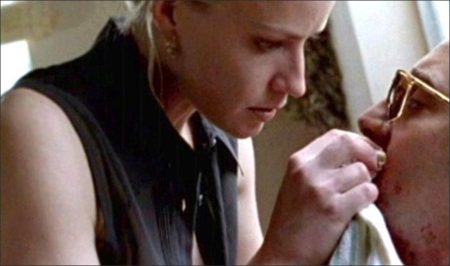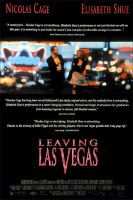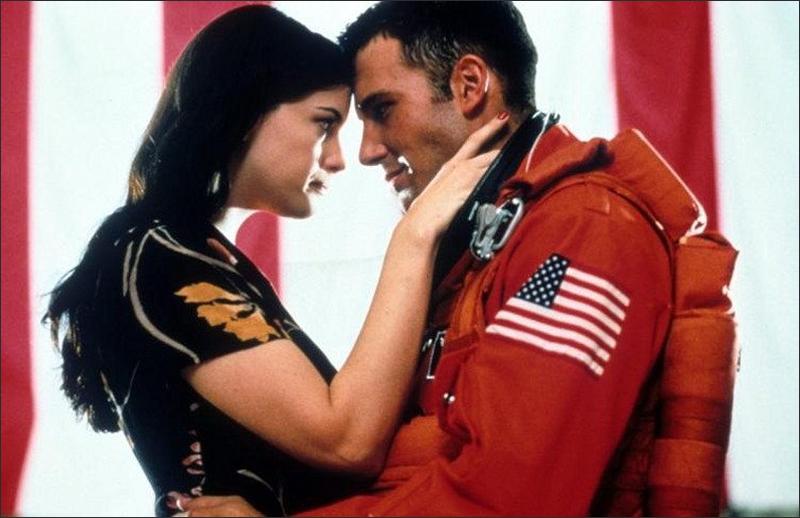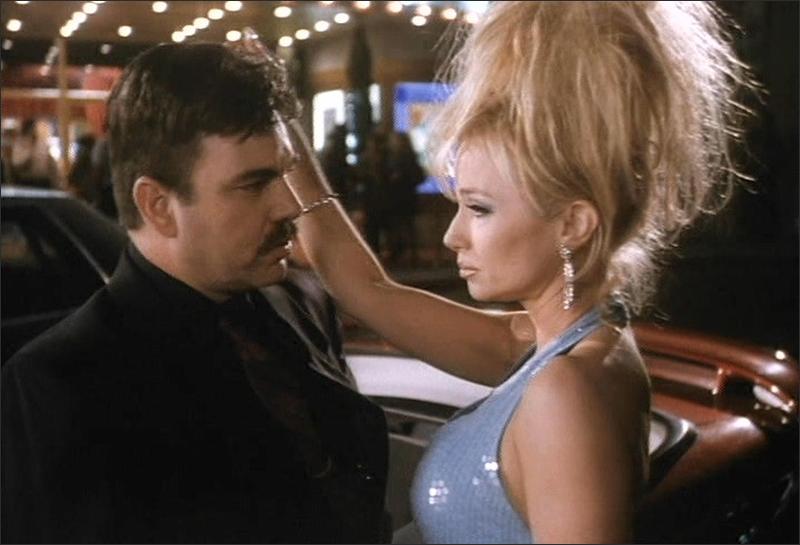Leaving Las Vegas movie storyline. Once a successful Hollywood screenwriter, Ben Sanderson is in a quick downward spiral, which is outwardly exhibited by his excessive drinking to the exclusion of all else. After he completes his life in Los Angeles to his satisfaction, which includes him burning all his painful personal memories, Ben decides to move to Las Vegas where he will literally drink himself to death.
There, he hires a high end hooker named Sera. Despite it being a less than successful sexual encounter, Sera and Ben feel a connection which eventually turns into love. A lonely woman, Sera has a destructive relationship with her sadistic pimp/lover, Yuri, who has his own dangerous criminal problems. Sera and Ben decide to live together for whatever time they have together, that relationship based on the mutual trust each has for the other in not changing the other’s life or path, which outwardly may be more difficult for Sera as it means watching Ben die.
Leaving Las Vegas is a 1995 romantic drama film written and directed by Mike Figgis and based on the semi-autobiographical novel Leaving Las Vegas by John O’Brien. Nicolas Cage stars as a suicidal alcoholic who has ended his personal and professional life to drink himself to death in Las Vegas. While there, he develops a relationship with a hardened prostitute played by Elisabeth Shue, which forms the center of the film. O’Brien committed suicide two weeks after principal photography of the film began.
Leaving Las Vegas was filmed in super 16mm instead of 35 mm film; while 16 mm is common for art house films, 35 mm is most commonly used for mainstream film. After limited release in the United States on October 27, 1995, Leaving Las Vegas was released nationwide on February 9, 1996, receiving strong praise from both critics and audiences. Cage received the Golden Globe Award for Best Actor – Motion Picture Drama and the Academy Award for Best Actor, while Shue was nominated for the Golden Globe Award for Best Actress – Motion Picture Drama and the Academy Award for Best Actress. The film also received nominations for Best Adapted Screenplay and Best Director.
The limited budget dictated the production and Figgis ended up filming in super 16mm and composing his own score. He remarked, “We didn’t have any money, and we weren’t pretending to be something we weren’t. We couldn’t shut down The Strip to shoot”. Figgis had problems because permits were not issued for some street scenes. This caused him to film some scenes on the Las Vegas strip in one take to avoid the police, which Figgis said benefited production and the authenticity of the acting.
He remarked: “I’ve always hated the convention of shooting on a street, and then having to stop the traffic, and then having to tell the actors, ‘Well, there’s meant to be traffic here, so you’re going to have to shout’. And they’re shouting, but it’s quiet and they feel really stupid, because it’s unnatural. You put them up against a couple of trucks, with it all happening around them, and their voices become great”.
Leaving Las Vegas had a limited release on October 27, 1995. After praise from critics and four Academy Award nominations, the film was released nationwide February 9, 1996. United Artists company distributed the film in North America, RCV Film Distribution with Atalanta Filmes in Europe, and in Australia 21st Century Film Corporation distributed the film.
Figgis encouraged the lead actors to experience their characters’ ordeals first-hand by extensive research. He told Film Critic: “It was just a week and a half of rehearsal. A lot of conversations. A lot of communication in the year before we made the film. Reading the book. I encouraged them [Cage and Shue] to do their own research, which they wanted to do anyway, and then ultimately the three of us got together and just started talking… talking about anything, not necessarily about the film or the script, about anything that came up”.
Nicolas Cage researched by binge drinking in Dublin for two weeks and had a friend videotape him so he could study his speech. He also visited hospitalized career alcoholics.[7] He said “it was one of the most enjoyable pieces of research I’ve ever had to do for a part.” Shue spent time interviewing several Las Vegas prostitutes.
Leaving Las Vegas movie trailer.
Leaving Las Vegas (1996)
Directed by: Mike Figgis
Starring: Nicolas Cage, Elisabeth Shue, Julian Sands, Richard Lewis, Steven Weber, Emily Procter, Valeria Golino, Carey Lowell, Albert Henderson, Anne Lange
Screenplay by: Mike Figgis
Production Design by: Waldemar Kalinowski
Cinematography by: Declan Quinn
Film Editing by: John Smith
Costume Design by: Laura Goldsmith
Set Decoration by: Florence Fellman
Art Direction by: Barry Kingston
Music by: Mike Figgis
MPAA Rating: R for strong sexuality and language, violence and pervasive alcohol abuse.
Distributed by: Metro Goldwyn Mayer
Release Date: February 9, 1996
Views: 318







